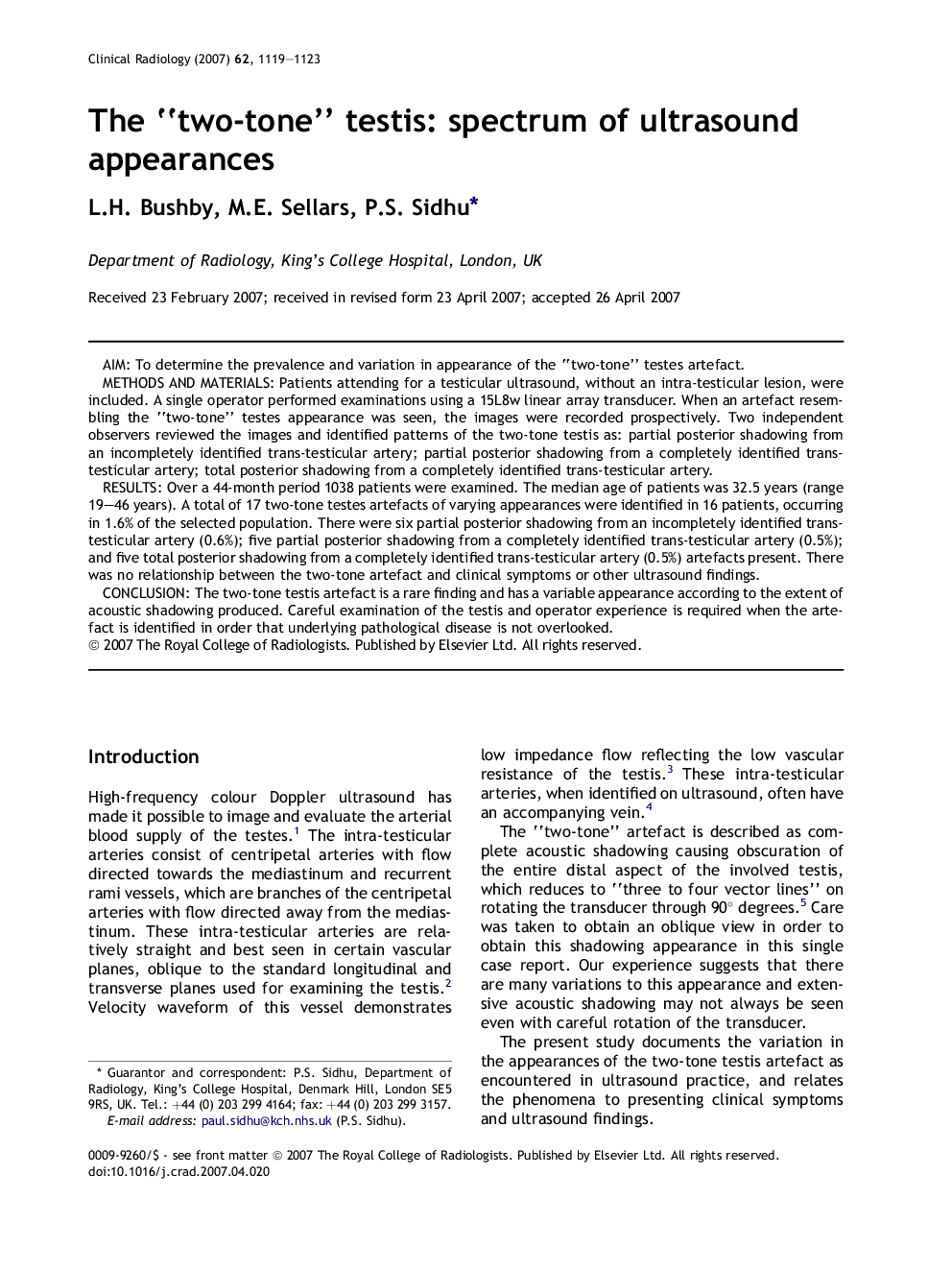| Article ID | Journal | Published Year | Pages | File Type |
|---|---|---|---|---|
| 3983192 | Clinical Radiology | 2007 | 5 Pages |
AimTo determine the prevalence and variation in appearance of the “two-tone” testes artefact.Methods and materialsPatients attending for a testicular ultrasound, without an intra-testicular lesion, were included. A single operator performed examinations using a 15L8w linear array transducer. When an artefact resembling the “two-tone” testes appearance was seen, the images were recorded prospectively. Two independent observers reviewed the images and identified patterns of the two-tone testis as: partial posterior shadowing from an incompletely identified trans-testicular artery; partial posterior shadowing from a completely identified trans-testicular artery; total posterior shadowing from a completely identified trans-testicular artery.ResultsOver a 44-month period 1038 patients were examined. The median age of patients was 32.5 years (range 19–46 years). A total of 17 two-tone testes artefacts of varying appearances were identified in 16 patients, occurring in 1.6% of the selected population. There were six partial posterior shadowing from an incompletely identified trans-testicular artery (0.6%); five partial posterior shadowing from a completely identified trans-testicular artery (0.5%); and five total posterior shadowing from a completely identified trans-testicular artery (0.5%) artefacts present. There was no relationship between the two-tone artefact and clinical symptoms or other ultrasound findings.ConclusionThe two-tone testis artefact is a rare finding and has a variable appearance according to the extent of acoustic shadowing produced. Careful examination of the testis and operator experience is required when the artefact is identified in order that underlying pathological disease is not overlooked.
